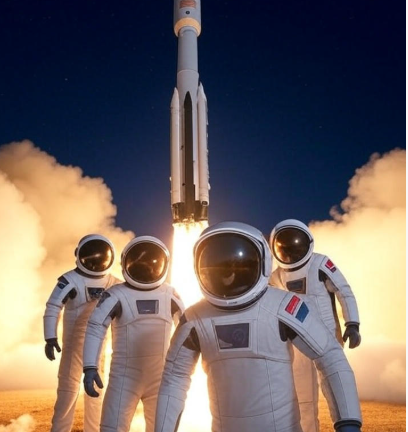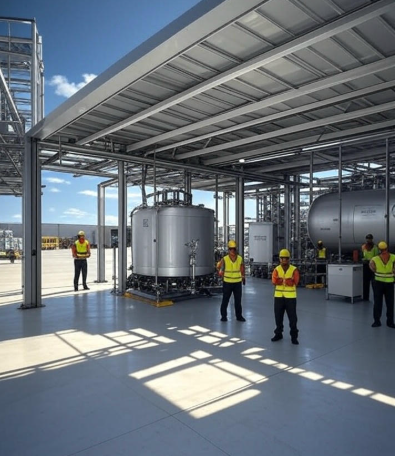Introduction
On May 16, 2025, NASA announced a remarkable feat: engineers at the Jet Propulsion Laboratory (JPL) successfully revived Voyager 1’s long-dormant thrusters, which had been considered “dead” since 2004. Launched in 1977, Voyager 1 is humanity’s farthest spacecraft, currently soaring through interstellar space over 15 billion miles (24 billion kilometers) from Earth. This blog post delves into the significance of this achievement, the storied history of the Voyager program, the technical ingenuity behind the fix, and what this means for the future of deep space exploration—while critically examining the narrative surrounding this event.
The Voyager Program: A Legacy of Discovery
The Voyager program, initiated by NASA in the 1970s, aimed to explore the outer planets of our solar system. Voyager 1 and its twin, Voyager 2, launched in 1977, embarked on a “Grand Tour” to study Jupiter, Saturn, Uranus, and Neptune. Voyager 1’s flybys of Jupiter and Saturn revealed new moons, such as Thebe and Metis, and a previously unknown ring around Saturn. After completing its primary mission, Voyager 1 continued its journey, crossing the heliopause—the boundary where the solar wind gives way to interstellar space—in August 2012, becoming the first human-made object to do so. Voyager 2 followed in 2018, and together, they have traveled over 29 billion miles (46.7 billion kilometers), providing unprecedented data on the interstellar medium.
The Voyagers’ longevity is a testament to their robust design and the ingenuity of NASA’s engineers. Powered by radioisotope thermoelectric generators (RTGs), which convert heat from decaying plutonium into electricity, the spacecraft were expected to last about a decade. Yet, nearly five decades later, they continue to transmit valuable data about cosmic rays, magnetic fields, and plasma density from beyond our solar system. This extended mission has made the Voyagers iconic, but it hasn’t been without challenges.
The Thruster Problem: A Critical Challenge
Voyager 1 relies on thrusters to maintain its orientation, ensuring its antenna remains pointed at Earth for communication. The spacecraft has primary thrusters for pitch and yaw adjustments, with a subset called roll thrusters that rotate the antenna to lock onto a guide star for navigation. In 2004, Voyager 1’s primary roll thrusters failed after losing power in two small internal heaters, which kept the hydrazine fuel warm enough to ignite. At the time, engineers switched to the backup roll thrusters, assuming the primaries were irreparable. As Kareem Badaruddin, Voyager mission manager at JPL, noted, the team was content with the backups and didn’t expect the spacecraft to last another 20 years.
However, by 2025, the backup roll thrusters were showing signs of trouble. Over decades, propellant residue had built up in the fuel tubes, risking clogs that could disable them entirely. A failure in the roll thrusters would prevent Voyager 1 from maintaining its antenna alignment, effectively ending communication with Earth and terminating the mission. With the backup thrusters potentially failing as early as fall 2025, engineers faced a ticking clock—especially since the Deep Space Station 43 (DSS-43) antenna in Canberra, Australia, the only dish powerful enough to send commands to Voyager, was scheduled for upgrades from May 4, 2025, to February 2026, with only brief operational windows in August and December.
The “Miracle Save”: Reviving the Thrusters
The JPL team devised a risky plan to revive the primary roll thrusters, dormant for over 20 years. The challenge was immense: Voyager 1 is 15 billion miles away, meaning a radio signal takes 23 hours to travel each way. Any command sent had to be precise, as there would be a 46-hour wait to confirm success. Moreover, the spacecraft’s aging systems meant sudden changes could cause unintended damage. Despite these risks, on March 20, 2025, the team sent a sequence of commands to activate the thrusters and their heaters.
Within 20 minutes of receiving the return signal, engineers observed a dramatic rise in the thruster heaters’ temperature—a clear sign the thrusters were firing as intended. Todd Barber, the mission’s propulsion lead at JPL, described it as a “glorious moment,” noting that team morale soared that day. The thrusters, long considered dead, were back in action, providing a critical backup to ensure Voyager 1 could maintain its orientation during the communication blackout. This fix was dubbed a “miracle save,” highlighting the creativity and determination of NASA’s engineers.
Technical Ingenuity and Long-Distance Problem Solving
The revival of Voyager 1’s thrusters underscores the extraordinary challenges of deep space engineering. The spacecraft, built with 1970s technology, operates in an environment where real-time intervention is impossible. The 46-hour communication lag requires meticulous planning, as engineers must anticipate every possible outcome. The thruster fix also reflects the team’s willingness to revisit past assumptions—an engineer’s insight into an alternative cause of the heater failure proved pivotal, demonstrating the value of persistence and innovation.
However, this achievement also reveals the fragility of Voyager 1’s systems. The spacecraft’s RTGs are losing power at a rate of about 4 watts per year, forcing engineers to prioritize which instruments to keep active. In recent years, NASA has turned off several instruments to conserve energy, with plans to operate at least one science instrument into the 2030s. The thruster issue is just one of many challenges, from clogged fuel lines to failing memory units, that the team has navigated to keep Voyager 1 operational.
Implications for Space Exploration
The successful revival of Voyager 1’s thrusters has broader implications for space exploration. First, it extends the mission’s lifespan, ensuring continued data collection from interstellar space—a region no other spacecraft has explored. This data is invaluable for understanding the boundaries of our solar system and the nature of the interstellar medium, informing future missions like the New Horizons probe, which is also venturing into deep space.
Second, the feat highlights the importance of long-term engineering and adaptability in space missions. The Voyagers were not designed for a 50-year journey, yet they continue to operate thanks to creative problem-solving. This resilience offers lessons for future missions, such as those to Mars or the outer planets, where spacecraft may need to function autonomously for decades.
Finally, the story of Voyager 1 resonates on a human level. Launched during an era of analog technology, the spacecraft carries a golden record—a message from humanity to potential extraterrestrial life. Its enduring journey captures our curiosity and ambition, reminding us of what we can achieve when we push the boundaries of exploration.
A Critical Perspective
While NASA’s achievement is undeniably impressive, the narrative of a “miracle save” warrants scrutiny. The term, while evocative, may oversimplify the systematic, iterative work of JPL’s engineers, who have been troubleshooting Voyager’s issues for decades. This framing could also serve a broader purpose: bolstering public support for NASA at a time when the agency faces budget constraints and competition from private space companies like SpaceX. By emphasizing the “miraculous” nature of the fix, NASA reinforces its image as a pioneer in space exploration, potentially overshadowing the need for increased funding and innovation to support future missions.
Moreover, the focus on Voyager 1’s revival risks diverting attention from systemic challenges in space exploration. The upgrades to the DSS-43 antenna, while necessary for future lunar landings and deep space missions, highlight the aging infrastructure of NASA’s Deep Space Network. The fact that only one antenna can communicate with Voyager underscores a potential vulnerability in our ability to support distant spacecraft. As humanity sets its sights on Mars and beyond, investing in robust communication networks and next-generation spacecraft will be crucial.
Insights
The revival of Voyager 1’s thrusters is a testament to human ingenuity and the enduring legacy of the Voyager program. Nearly 48 years after its launch, Voyager 1 continues to defy expectations, sending back data from the edge of our solar system. This achievement not only extends the mission’s lifespan but also inspires future generations of explorers. However, it also prompts us to reflect on the challenges and opportunities ahead in space exploration. As we celebrate this milestone, let’s advocate for the resources and innovation needed to ensure that humanity’s journey into the cosmos continues to thrive.
Reflections
What are your thoughts on Voyager 1’s incredible journey? Share your reflections in the comments, and let’s discuss how we can support the next era of space exploration!



